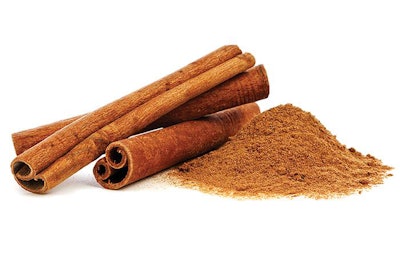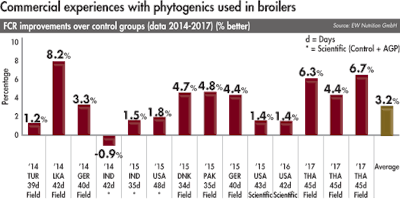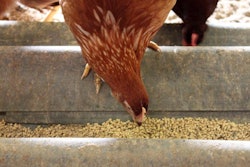
Phytogenics are a family of additives with some considerable history. In fact, phytogenics have been around for a couple of decades under various names: essential oils, plant extracts, botanicals and now, phytogenics. Although the basic compounds that constitute this family of additives remain, in theory, unchanged, the way these additives are manufactured and put together has changed considerably. As such, it merits revisiting this interesting additive, if only to catch up with the latest developments and even to establish some basic facts about them. After all, not much is known about their role in plants, let alone in animals.
1. What are these phytogenics?
Phytogenics are almost invariably compounds that belong to secondary plant metabolism. With that we mean that plants use these compounds for specific purposes. They do not participate in the daily or primary plant metabolism, such as that involving carbohydrate or protein synthesis, for example. Until some years ago, these secondary plant metabolism compounds were characterized as biologically insignificant because scientists thought they had no apparent function.
Phytogenics improve feed efficiency in both poultry and pigs, in all age classes of both species.
This is a situation similar to what we call “junk DNA,” which is basically DNA that we currently cannot identify its use. Likewise, dark matter makes up 99 percent of the universe, and it is called dark only because we cannot find out its use, purpose or even consistency. Coming back to phytogenics, today we can safely say that their role is pivotal in plant life, if not for everyday function, at least for long-term survival against environmental threats.
2. Difference with essential oils
The history of phytogenics began with extracts; oregano is a very fine example. A truckload of fresh oregano leaves was distilled, and the extract was collected, purified and sold as oregano essential oil. The term essential oil is a misnomer as it refers to the aroma or “essence” of a plant and not to its essentiality in any specific way. These kind of extracts, also known as ethereal oils or just oil of a specific plant (oil of clove, for example), are used in human medicine and aromatherapy. Thus the term essential should not be confused with “indispensable” but with having a specific aroma.
Another difference is that the original extracts were a blend of various compounds, most likely more compounds than we could probably detect. Oregano extract, for example, contains carvacrol, thymol, linaleol and terpineol, among other minor compounds. In practice, however, it is carvacrol, and to a lesser extent, thymol, that have been found to be most effective as animal feed additives. Today, the most effective compounds are purified (more expensive) or synthesized (less expensive) so that their quality (concentration and potency) can be standardized precisely for commercial purposes.
Read more: Feed phytogenic market growth shaped by global views
Most modern phytogenic additives contain blends of pure compounds because this enables characterization and consistency, not only in terms of manufacturing and marketing, but also in dosaging animal feeds. This latter aspect is not insignificant, because an excess of phytogenics will turn animals away from feed — it is like adding too much of any spice in our own food.
3. Their role inside plants
Although we remain far from declaring we fully understand the role of all secondary plant metabolism compounds — there are more than 25,000 such molecules — we can at least describe a few generic functions:
- Antioxidant activity. It has been shown that plants grown in heat-stressed areas have a higher concentration of some phytogenic compounds. As we know that thermal stress increases oxidation, we can assume that some phytogenic compounds became vital for survival during heat stress. They might help plants in many other activities that reduce the impact of heat stress, but this only increases their significance.
- Self-defense. Some compounds show strong antiviral, antibacterial and antifungal activities. It merits repeating that plants cannot escape their environment, as animals can, and thus they depend on their own production of chemical weaponry and pharmaceuticals. In addition, they have to defend against herbivores; most of the phytogenic compounds in question create an unpleasant eating experience when in high enough concentrations, but a most pleasant one when in tiny amounts.
- Reproduction aids. At small concentrations, certain phytogenics attract plant pollinators, such as bees, and seed-dispersing animals, such as birds. They offer a pleasant experience in return for helping them with their lack of mobility in expanding their realm. Perhaps this is why we find foods with spices more delightful, too!
4. Their role inside the animal gut
When used as an additive in animal feeds, phytogenics have been shown to exert three distinct roles:
- Increase secretion of enzymes, such is the action of capsaicin, which results in improved feed digestibility.
- Directly affect certain microorganisms by reducing their survival and minimize the level of microbial load for the host, ending again in more nutrients available for the host. They aid in killing pathogenic microorganisms, mostly indirectly. They do this by increasing the permeability of microbial membranes, allowing the entrance to organic acids that eventually kill bacteria. This not only further reduces overall microbial load but can also contribute to a healthier gut environment.
- Antioxidant activity and stimulation of the immune system. These are the least-explored areas, but ones that find increasing attention. Most likely, the more we study phytogenics, the more functions we will recognize.
Here we must emphasize that phytogenics are not used to control pathogens like antibiotics do. Their mode of action is more indirect: they reduce overall gut bacterial load, resulting in improved feed efficiency. In this respect, their use brings about the same result as that of feed-grade antibiotic growth promoters, which were used not to treat pathogenic diseases, but to improve overall animal performance.
5. Pros and cons using them
As mentioned above, phytogenics improve feed efficiency in both poultry and pigs, quite interestingly in all age classes of both species. The magnitude of response depends on animal age, basal diet and, above all, animal health status. In general, it can be said that phytogenics improve feed efficiency rate by 2 to 5 percent. Whether this is a viable return on investment depends on the economics of each product, the status of each farm and, of course, the basal level of feed efficiency. In brief, the highest response should be expected in animals already suffering from low feed efficiency due to an extreme load of bacteria in their gut. As it happens, concurrent use with organic acids appears to offer a synergistic effect, something which must be accounted for when evaluating the return on investment for both additives.

In general, phytogenics improve feed efficiency rate by 2 to 5 percent.
On the negative side, it must be kept in mind that phytogenics, at least most of them, are volatile. If used without specific care taken to account for this trait, the amount of each compound reaching the gut diminishes as the feed is processed (worse if it is pelleted) and stored for prolonged periods of time. Modern products that offer phytogenics protected in a basically fat capsule (encapsulated) or some other similar form are available, but at a premium in price that always goes hand in hand with security and quality.













